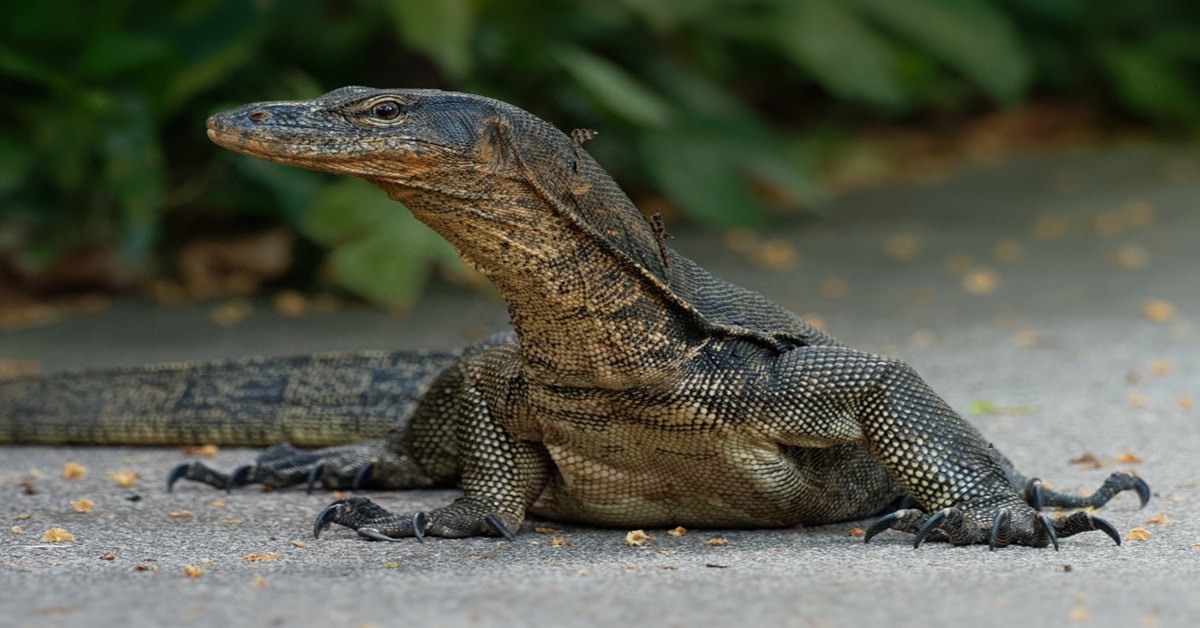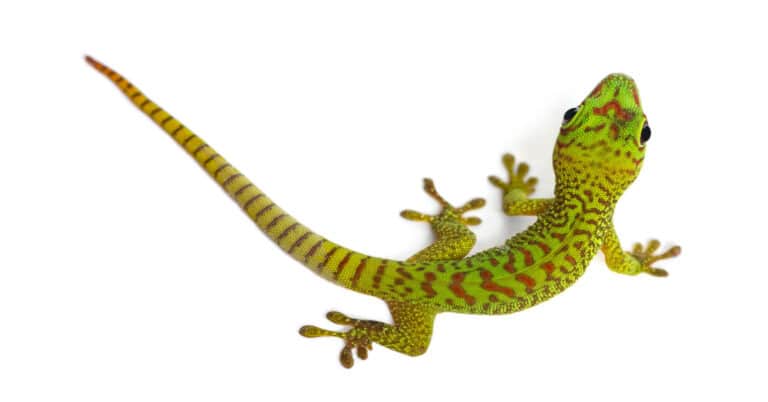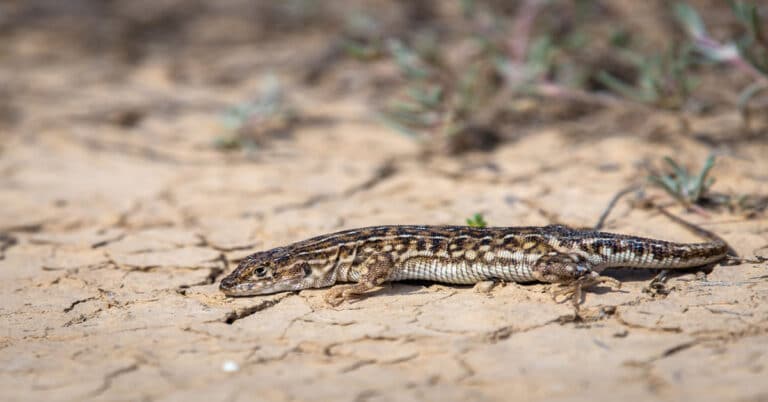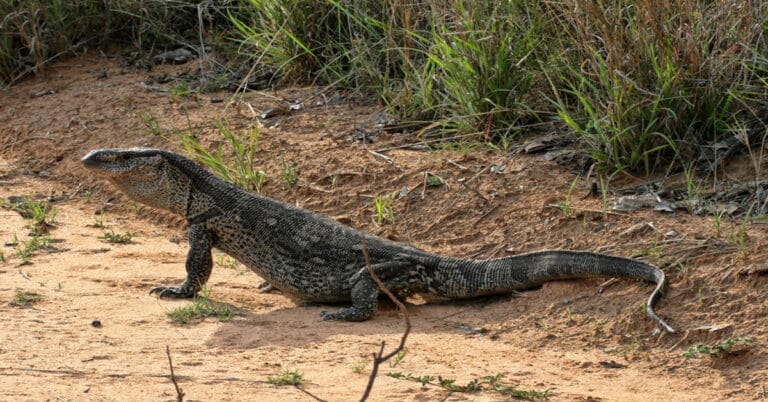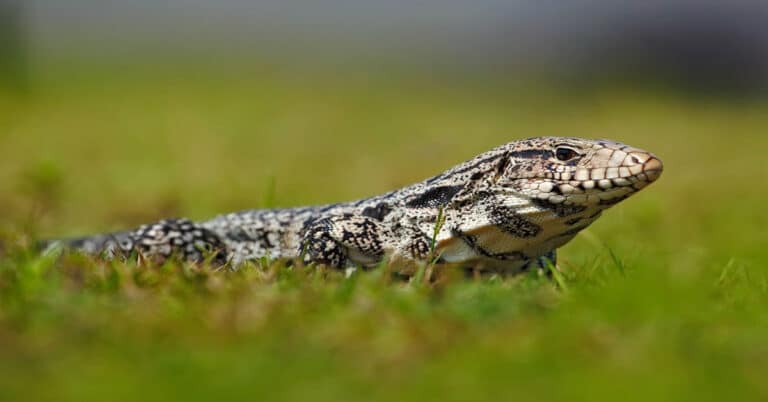Monitor Lizard
The monitor lizard is a member of the order Squamata, the family Varanidae, and the genus Varanus. That specific species of lizard has a variety of subgenres. The Arabic term for dragon or lizard beast is where its name – Varanus, originates from. The monitor lizard’s habit of standing on its hind legs to survey its surroundings may be the source of its common English name – “Monitor Lizard.”
Depending on where they are found, monitor lizards are known by a variety of different names, including Gray’s monitor, Savannah monitor, Timor tree monitor, Crocodile monitor, West African Nile monitor, etc. Borneo is home to a unique species of monitor known as the earless monitor. It is the sole species in the Lanthanotinae monitor subfamily. It has an extended body and a similar appearance to other monitors, but its limbs are smaller than they should be for its species.
Scientific Classification
| Kingdom: | Animalia |
| Phylum: | Chordata |
| Class: | Reptilia |
| Order: | Squamata |
| Family: | Varanidae |
| Genus: | Varanus |
The main dwelling place of the large Monitor Lizards is the jungle regions, whereas a few are water-bound. Still, there are a few varieties of monitor lizards known to possess faint amount of venom, like the Komodo dragon, the largest in this variety.
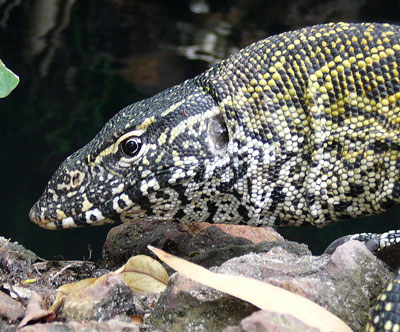
Anatomy
The physical features of the Monitor Lizards are: Powerful claws and tail, long neck and well formed limbs. Even though the majority of the varieties is terrestrial, you will find arboreal as well as semi-aquatic monitors as well. Despite the fact that the majority of the monitor lizards is carnivorous, three special arboreal varieties, namely Varanus mabitang, Varanus bitatawa and Varanus Olivaceus are are frugivorous (fruit eating). The color of these lizards varies from Brown to Green, Tan, Gray with scales on the skin.
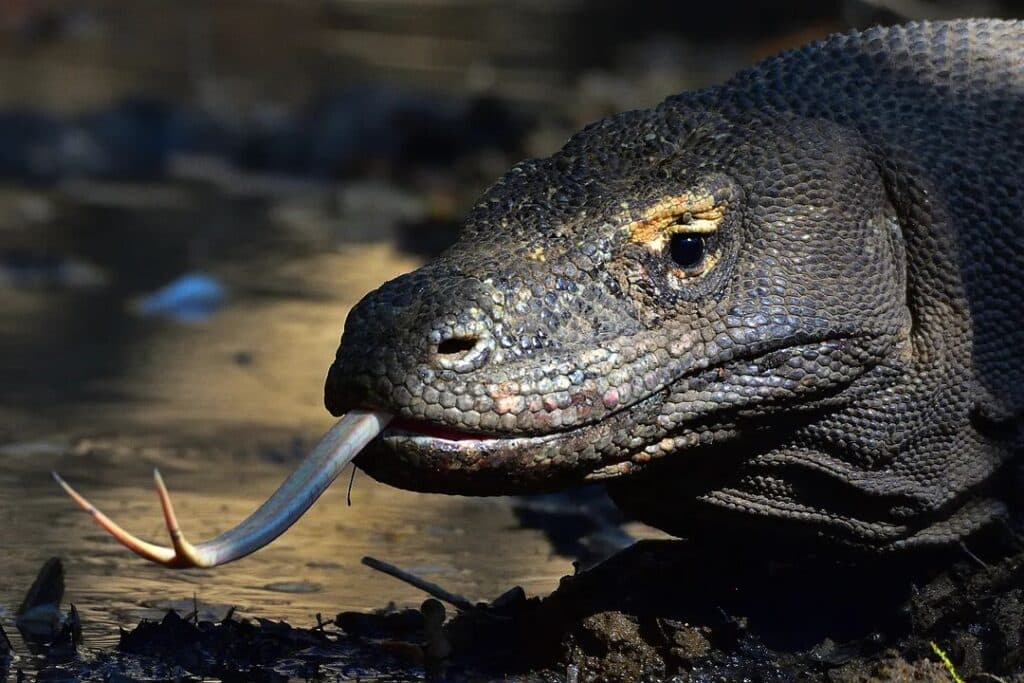
Behavioral Characteristics Of The Monitor Lizard
Although monitor lizards are primarily solitary creatures, they occasionally congregate in packs of up to 25 in places with scarce water supplies. Otherwise, until they gather to reproduce, monitor lizards usually live alone. Especially with the bigger species, monitors like to wander around on land where they are largely terrestrial in nature. There are also a few species of aquatic monitor lizards.
The majority of monitors only consume animal flesh and are typically carnivorous eaters. Although they are often wary of people, monitors may be violent if provoked. They have powerful jaws and tails and move faster than they look. When defending their territory or food, monitors may be highly hostile. Many monitors hunt actively, stalking and pursuing their prey.
Monitor lizards frequently grab their prey before moving it to a hidden location to kill and devour it. By doing so, they avoid becoming prey themselves, exposing themselves to danger and disclosing the locations where they can easily become prey. However, not all monitor lizards behave in this way.
Eating Habits In The Wild
In the Old World, monitor lizards were dominant hunters because of their smart nature and power. Despite the fact that they frequently use entirely different mechanisms, for example, using the tongue to sense smell instead of a nose, they are nonetheless considered to be as adept and resourceful similar to the mammal species.
The food of these monitor lizards varies according to their habitat, size, and species. Typically, tree monitors consume both insects and birds. Some tree monitor species can also consume fruits and vegetation. The majority of the food that water monitors consume is aquatic. This includes aquatic animals and reptiles as well as fish, waterbirds, insects, and eggs.
These mostly terrestrial lizards, like the Komodo dragon, can consume a variety of live prey in addition to carrion. The island’s native deer make up around half of the Komodo dragon’s diet. Pigs and cattle are also reported to be consumed by komodo dragons.
The hunting range of monitor lizards is quite extensive. They typically consume a lot of food during the rainy season so that they have enough fat-stored energy to get through the lean times of the dry season. However, even during the dry season, the amount of food is limited. During the dry season, their preferred meals, such as beetles and crickets, are less common.
Many species of monitor lizard primarily hunt other, smaller lizards. Hence, they are typically smart enough to fool lizards that are being chased. For instance, a lizard trying to flee would frequently run in a zigzag motion toward a bush, rock, or another type of hiding place. The monitor lizard does not move in the lizard’s zigzag pattern. Instead, it moves straight toward the thing the lizard is fleeing to, and the monitor gets its prey before it manages to hide.
Threats to Monitor Lizards
Humans are the major predators of monitor lizards. Humans pursue some of those reptiles for their skin to be used as leather. The Komodo dragon is the lone exception, as its skin is too hard for leather. All varieties of monitor lizards’ young are preyed upon by snakes, big cats, fish, large-sized birds, and even other lizards.
The Komodo dragon, for instance, is regarded as being a vulnerable animal as a result of its conservation status. The Asian water monitor, on the other hand, has the conservation rating of least concern. It is thought that the Panay monitor lizard is under threat and is in danger. Most of these lizards’ population declines are caused by challenges to their habitat, dwindling water supplies, and human-caused hunting.
Today, there are over 80 different species of monitor lizard worldwide. The population sizes of the smallest species are unknown. However, those ones are typically found in trees or bodies of water.
One species whose population size is unclear is the uncommon earless monitor lizard. And because of the small amount, they are considered vulnerable. On the other hand, the earless monitor is nocturnal and rarely observed by residents. The data on many of the monitor lizards is unknown. To prevent their numbers from diminishing, the Komodo dragon is conserved and protected at several locations.
Interesting Facts About Monitor Lizards
- Monitor lizards have exceptionally well-developed vision, and they do not blink.
- Those reptiles turn out to be very playful, and when kept as pets, they are often noticed to be seeking attention.
- Even though those creatures can be very skilled and vicious predators, they cause no harm to humans.
- Monitor lizards have a very high metabolism; therefore, they are characterized by burning energy faster than any other reptile. With this specific trait, they are more like mammals than reptiles.
- Unlike other reptiles, those specific lizards are considered to be very intelligent.
Behavior
We assume that Monitor Lizards are moderately clever animals, and certain people declare that monitor lizards do recognize numbers till six, This implies that monitor lizards can count! It is in the wild that the monitor lizards make use of their intelligence for threat perception and for hunting their prey.
Habitat
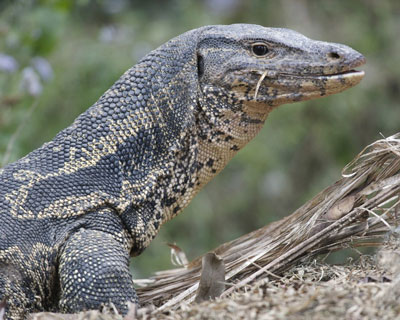
The different varieties of these lizards spread over an extensive area that includes the islands of South China Sea and the Indian Ocean, Australia, Philippines, New Guinea, the Subcontinent of India leading to China right through South East Asia merging into Indonesia and Africa. In the Malaysian State of Pahang on the Tioman Island, you can find a major number of the monitor lizards. You can also come across a few of them in South Florida, mainly in the Everglades, where they pose a threat to the wildlife, the cattle as well as the alligators.
As a pet
Not all take a fancy to monitor lizards. Even though pet monitor lizards are easy to tame, and you can have fun with them, it incurs a lot of hard work in nurturing them. Provide a habitat that is appropriate and big enough, with the right food and routine care.
Breeding
Similar to other lizards, breeding a Monitor lizard needs patience, knowledge and time. Husbandry is the chief component in breeding. Production is possible only with the right type of food, temperature and housing that replicate its natural environment.
Housing
The size of the adult pet determines the height and size of the cage. A cage of size 8’ x 3’ x 6’ is sufficient for a big monitor. Often go for the biggest enclosure. The enclosure appears secure and safe when you furnish it with shelves, strong branches, ramps, ledges and other decorative items facilitating your pet to bask, climb and search for a hideout.
A large tub or a kiddie pool with ramps for easy entrance and exit is essential for monitors that take pleasure staying in the water. A water heater is also essential.
A lengthy UVB fluorescent bulb that emits its light over a wide area is an added advantage.
Food
Grasshoppers, mealworms, crickets, cockroaches are the insects in their diet.
The monitor food available in the market gives the exact amount of nutrients and vitamins.
Feed your pet on pre-killed mice of suitable size.
Chop and grind to bite size, the raw food available at the grocery shops, like ground chicken or turkey, shrimp, eggs, crab or fish.
Supplement with Vitamin D3 and A calcium, a reptile multivitamin.
Handling
It is also necessary to tame a pet monitor. Biting, whipping its tail and scratching are actions show its displeasure. This gives pain. For taming the Monitor lizards you need constant patience and frequent handling. If you are ready to spare some time with your pet, it turns as a fantastic pet.
Bottom Line
Monitor lizards are considered the smartest lizard species. Those interesting creatures are often held as pets and can be pretty playful and cheerful around people. Even though they generally cause no harm to humans, those creatures are considered ruthless predators in the wild. Their hunting and eating habits are very interesting and different from those of other reptiles. With many characteristics, the Monitor lizards are similar to mammals.

Having discovered a fondness for insects while pursuing her degree in Biology, Randi Jones was quite bugged to know that people usually dismissed these little creatures as “creepy-crawlies”.

